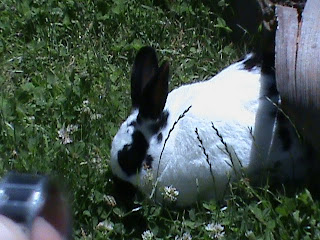

This kind of scary looking tortoise and rabbit are eating grass that will soon become glycogen. Glycogen is a polysaccharide (carbohydrate) that is stored in the liver and muscles of animals. When the time arrives, this glycogen will get converted to glucose. Glucose can also be found in protein filled animal products.















































